IN A NUTSHELL..
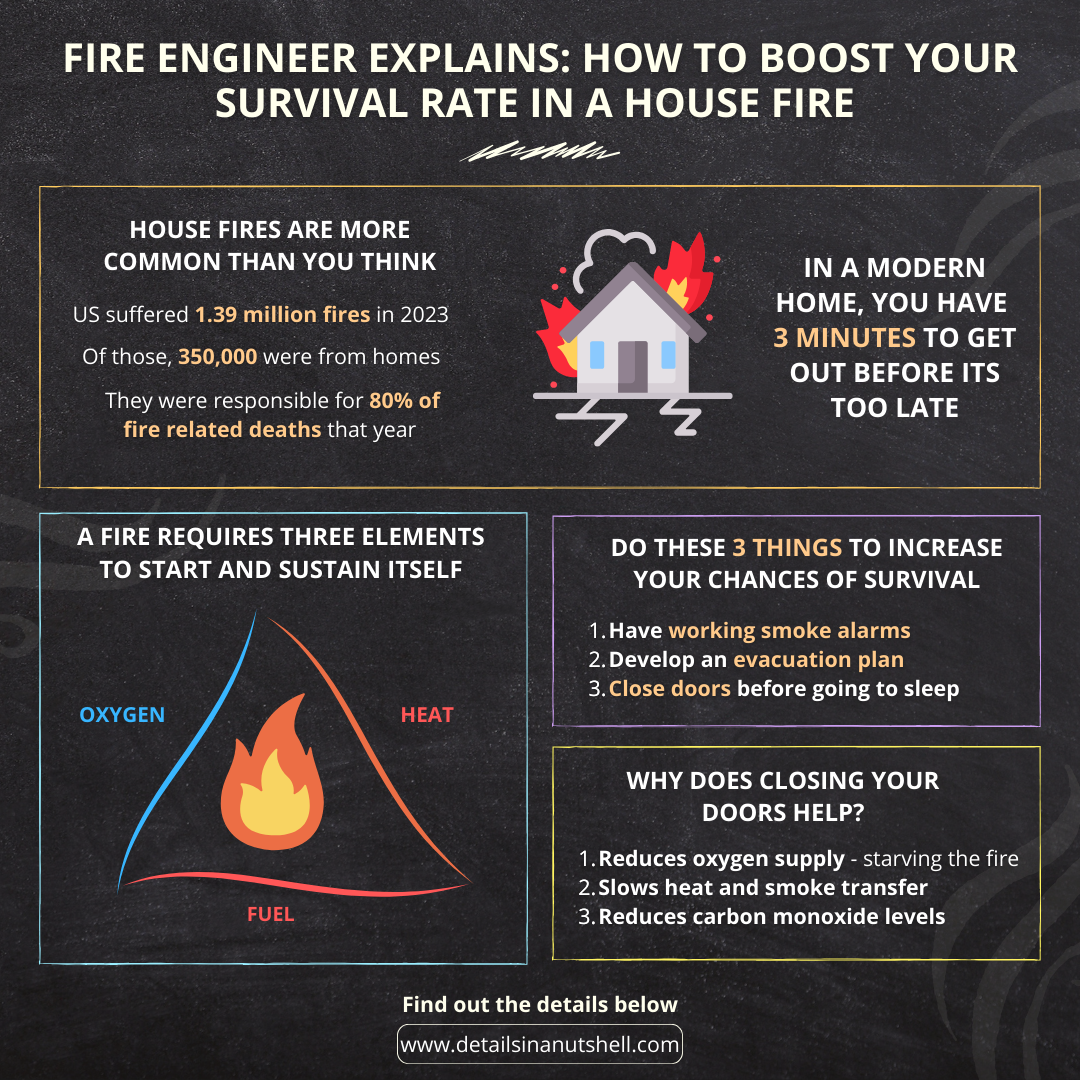
House fires can occur in any home, often due to common everyday activities. Modern homes burn faster due to synthetic materials and construction methods, reducing the time for safe evacuation. Understanding the fire triangle (heat, fuel, oxygen) is key to fire prevention.
Closing bedroom doors at night, having working smoke alarms, and a well-rehearsed evacuation plan can significantly increase your chances of surviving a house fire. Prepare, stay vigilant, and prioritize fire safety to protect your family.
No affiliate links or sponsored products on this page.
Are You Safe At Home?
I mentioned on my About Me page that I’m an engineering consultant, but I haven’t shared what I actually do for living. I’m a Fire Safety Engineer.
In simple terms, Fire Engineers focus on preventing, managing and mitigating risks associated with fire hazards in buildings and structures. We apply engineering principles and fire science to develop systems and strategies that minimize the risk and impact of fire-related incidents. Our goal? To ensure safety codes are met so that people like yourselves, and firefighters have the best possible chance of staying safe.
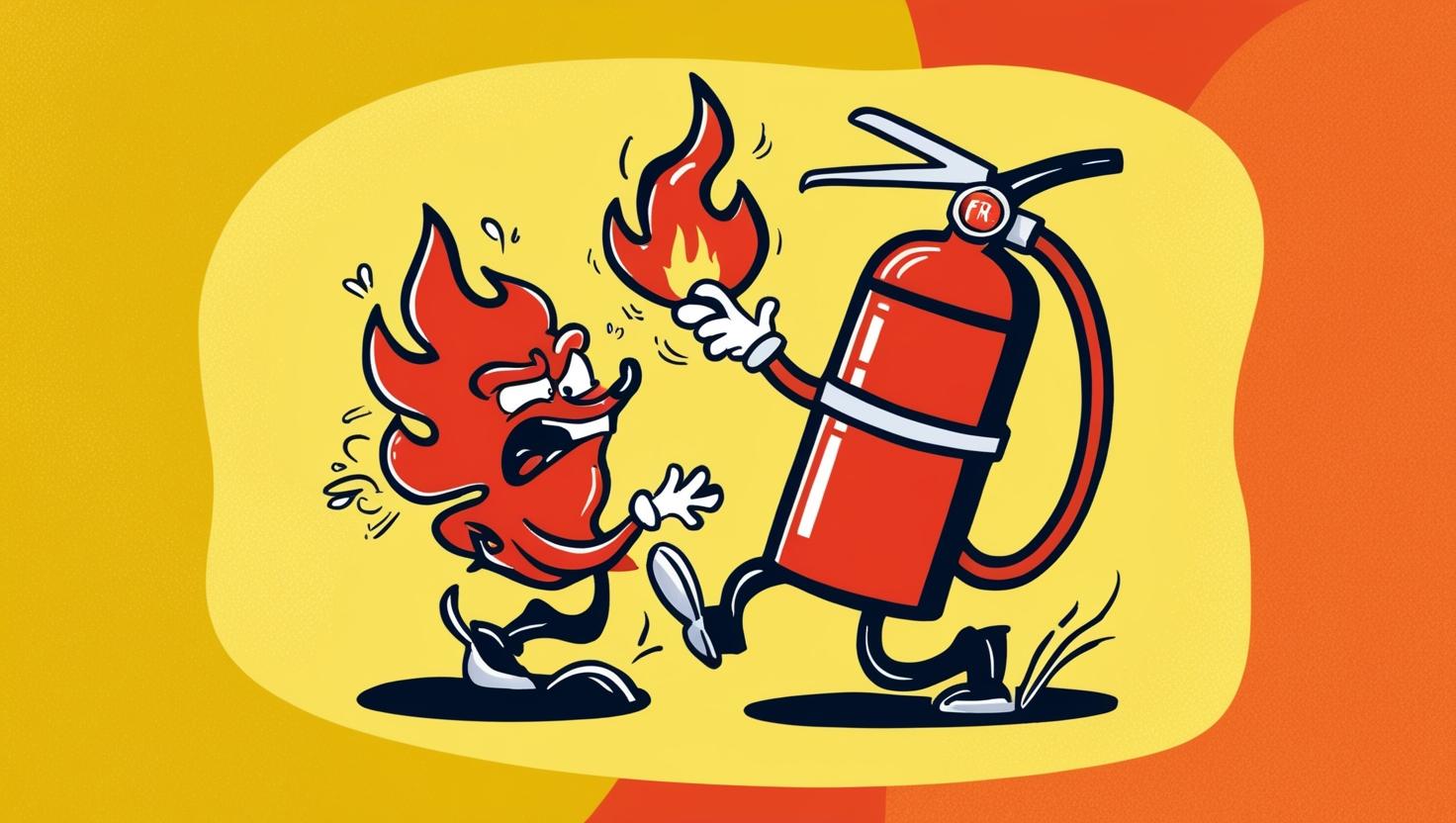
I know firsthand how quickly things can turn dangerous when a fire breaks out. That’s why I want to take a moment to talk about your home.
Home is where we’re meant to feel safest—where we relax, unwind, and forget our worries (except for what to feed the kids for dinner). But is your home actually as safe as you think?
From kitchen fires to e-scooters bursting into flames, let’s talk about fire risks and something you should consider adding to your daily routine to protect your family.
Fires Can Happen to Any Home
Many people think house fires are rare, or only happen due to extreme negligence, but the truth is, they can start in any home, at any time. A forgotten candle, an overloaded power strip, or a kitchen mishap is all it takes.
Modern homes are also more susceptible to rapid fire spread, primarily due to the materials and construction methods used. Research by Underwriters Authority, indicates that today’s homes burn up to eight times faster and produce significantly more smoke than those built 50 years ago.
In the past, homes were furnished with with solid wood and natural materials. Today’s homes? Not so much. Nowadays we have:
- More plastics & synthetics – Sofas, carpets, curtains, and furniture are often made from petroleum-based materials that burn rapidly.
- More combustibles – Open floor plans, lightweight construction, and packed storage spaces mean fires spread faster than ever.
Occupants back then had roughly 17 minutes to evacuate after a fire started. In contrast, modern homes can become fully engulfed in flames in as little as three minutes, significantly reducing the time available for escape. That’s why every second counts.
Here is a video by the National Institute of Standards and Testing – showcasing the difference between how fast a fire develops in a legacy room versus a modern room
House Fire Statistics
In 2023, U.S. fire departments responded to 1.39 million fires, a number that might seem distant—until you realize the lives behind it. These fires tragically claimed the lives of 3,670 people and injured more than 13,350.
- On average, fire departments were called to a fire every 23 seconds.
- Every 4th call would likely be a home related fire
- Home related fires made up 25% of all fires, totaling over 350,000 cases
- 2,980 of the 3,670 total deaths were were caused by house fires – that’s 80% of the total deaths despite only being 25% of the fire scenarios.
Just let this sink in.. Every 92 seconds a house is likely involved in a fire, it could any of ours.
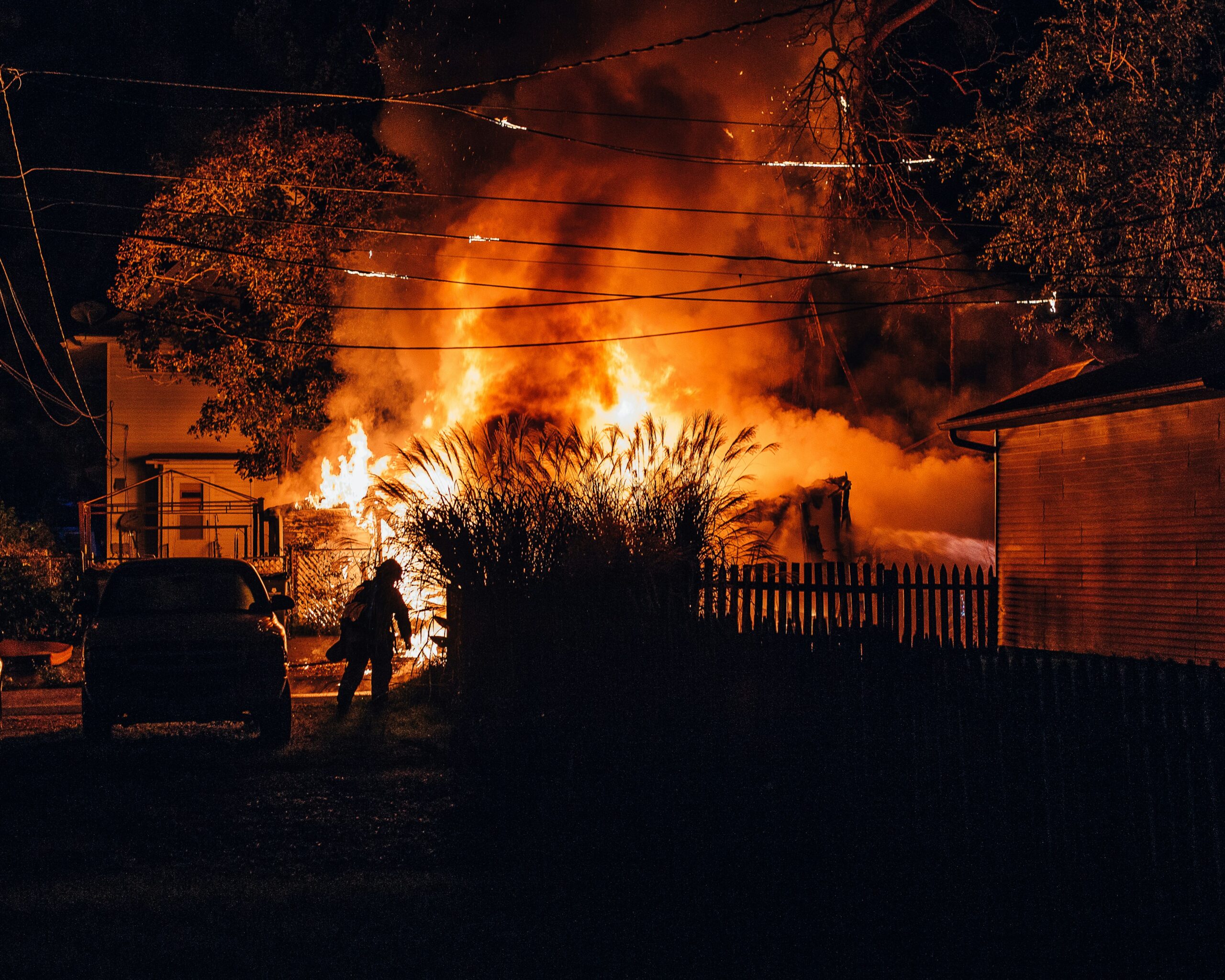
These numbers aren’t just statistics—they’re reminders of how fragile safety can be and how essential it is to be prepared. Most of the lives lost in fires can be prevented.
Full report on the statistics and findings can be found on the NFPA link at the bottom of this post.
Understanding the Fire Triangle
The fire triangle, also known as the combustion triangle, is a fundamental concept in fire science and safety. It explains the three key elements required for a fire to ignite and sustain itself: heat, fuel, and oxygen. Removing any of these elements can extinguish the fire.
- HEAT – A spark or ignition source (think stove flames, electrical malfunctions, or even a space heater too close to furniture).
- FUEL – Anything that burns (wood, fabric, plastic, and unfortunately, the synthetic materials in modern homes burn fast).
- OXYGEN – The air around us fuels the flames.
Remove any one of these, and a fire can’t survive. That’s why fire safety revolves around breaking the triangle before it’s too late.
The Power Of Closing Your Door
Here is a simple and easy way to increase you and your family’s chances of surviving in a house fire at night – Close your bedroom door before you sleep.
You’ve seen how fast fires in a modern home can develop, and that every second is important in making your escape. A closed door is what can buy you the precious time you may need if you are trapped and have no other way of getting out safely.
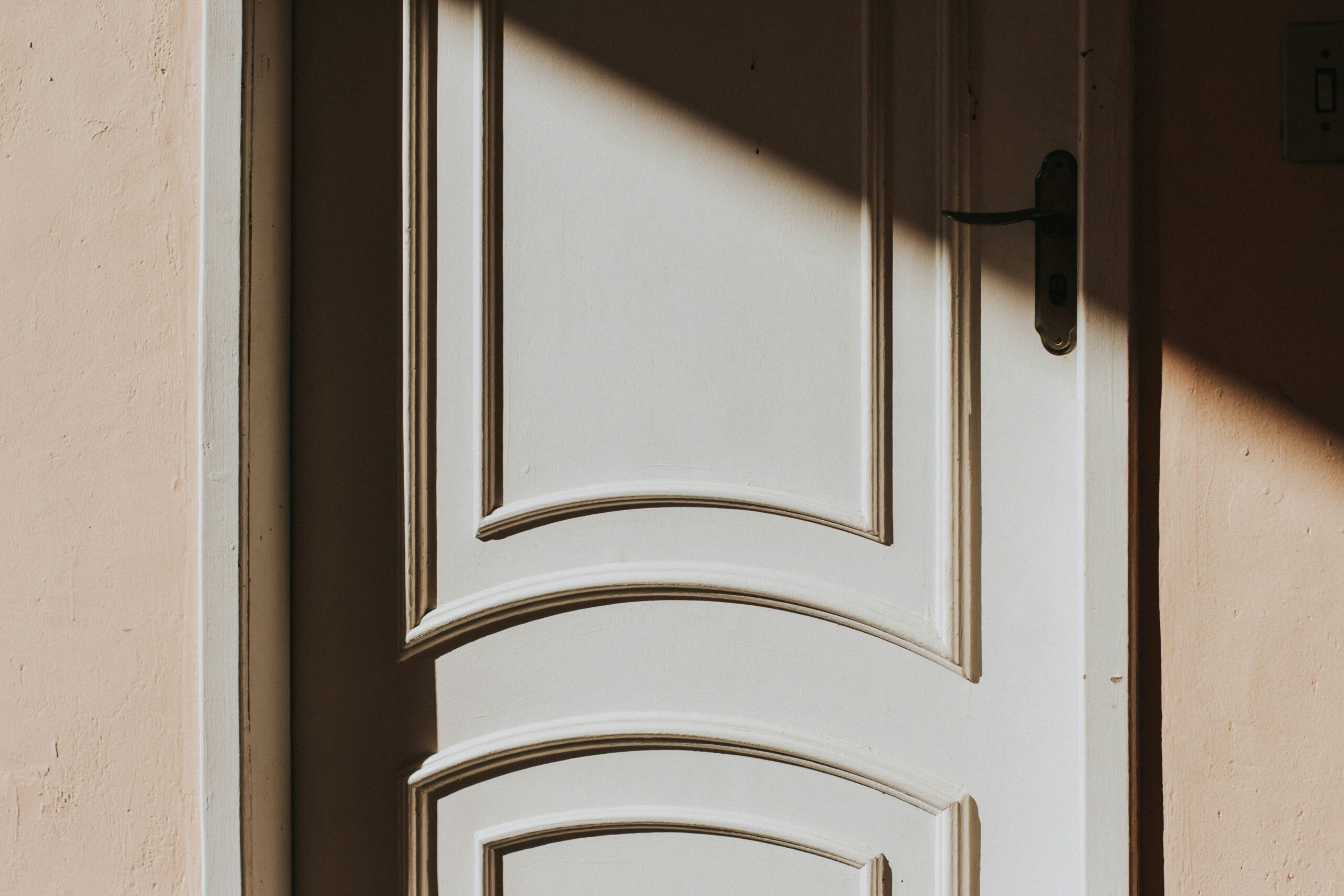
Here’s why it works:
From a fire science perspective, shutting the door interrupts the fire triangle in two critical ways:
- REDUCTION IN OXYGEN SUPPLY – Fire needs oxygen to grow. A closed door limits the amount of fresh air feeding the flames.
- SLOWS HEAT AND SMOKE TRANSFER – Fires can reach over 1,000°F (~538°C) in just a few minutes. A door acts as a barrier, buying you precious escape time, even though its not fire rated.
- REDUCE CARBON MONOXIDE LEVELS – Breathing in carbon monoxide reduces the amount of oxygen that can be carried by the blood and can be fatal. A closed door limits the transfer of this.
Below is a short video created by Underwriters Laboratories’ Fire Safety Research Institute to showcase the difference between an open and closed bedroom door. The difference is night and day.
But Here’s the Catch…
Closing the door alone won’t help if your smoke alarms don’t wake you up in time. So if your smoke alarms are not hardwired, consider doing so, but in the meantime make sure to do the following:
- Ensure that you at least have working smoke alarms in key areas of your house
- Set up a schedule to regularly test them. You can ideas on the best scheduling app for your family here.
- Change batteries of your smoke alarms at least once every year.
FUN FACT
Our sense of smell stops working when we are asleep. So if there is a fire, you won’t wake up from the smell of smoke. That’s why it’s important to have interconnected smoke alarms at home. Unlike our ability to smell, our hearing remains relatively active during sleep.
To Compliment this:
You need to develop an fire escape plan for your house so everyone in the household knows exactly how to respond in a fire. It doesn’t have to be fancy, but you should have an escape plan written down and memorized. It should have a series of backup plans just in case. Here’s an example below.
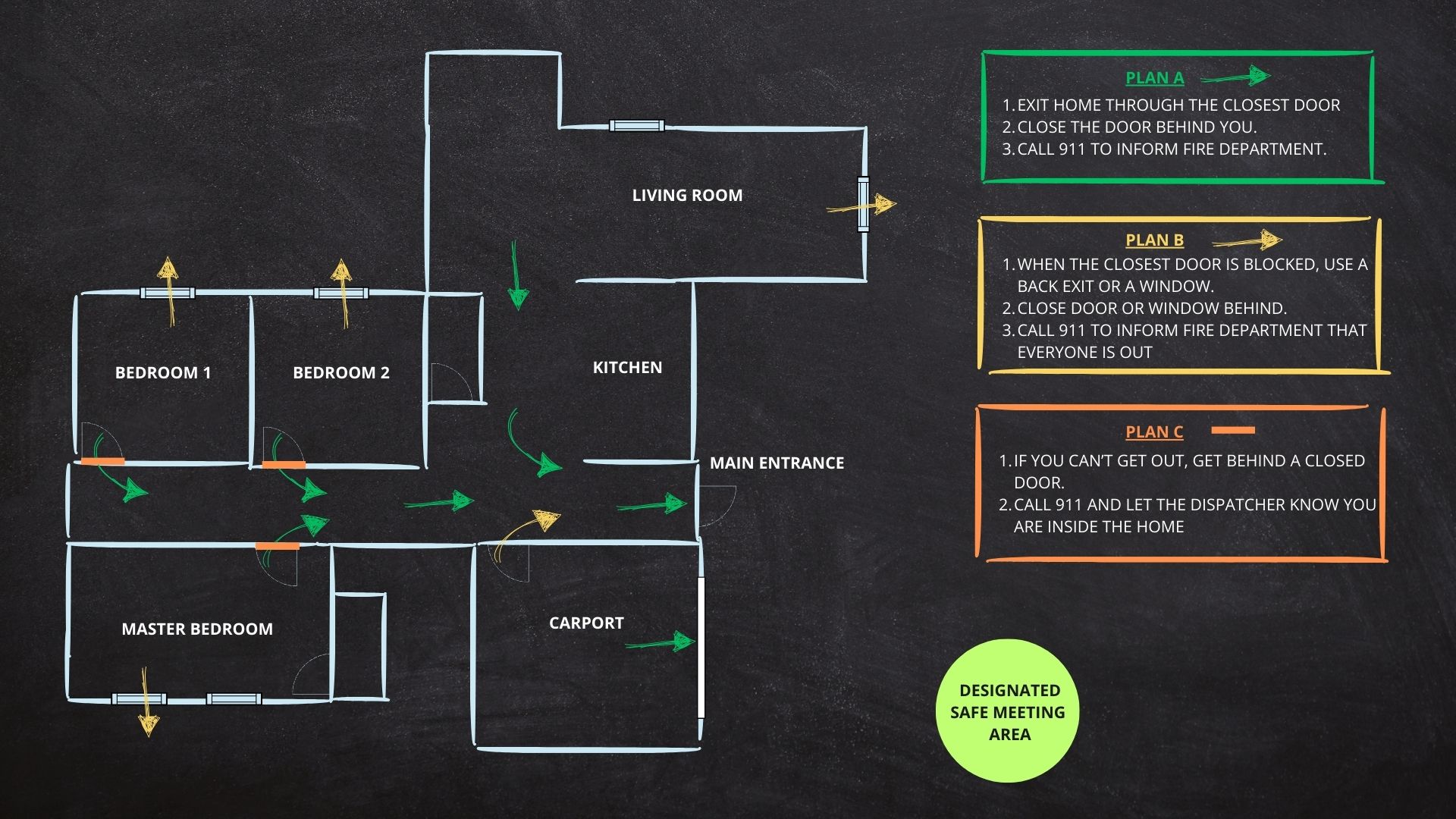
Conclusion
Fires in homes are a real thing, and given how they burn at an accelerated rate in the modern home – every second on your side counts.
By making sure you do the following three things, you increase your chances of getting out safely:
- Have working smoke alarms around the clock
- Develop an evacuation plan for your house
- Shut your doors before you go to sleep
Don’t disregard fire safety until its too late.
Sharing Corner
I hope this helps raise awareness around fire safety at home and this certainly won’t be the last post on this topic. But in the meantime, let me know if you have any questions or would like to know more about something.
Below are links to the referenced websites if you want to dig a bit deeper:
| NFPA Research – Fire loss in the United States | Link to website Link to 2023 report |
| Underwriters Laboratory Research Institute – Close Before You Doze | Link to website |







